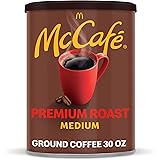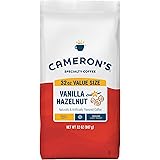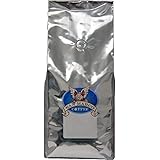Mastering Beginner Pour-Over Coffee: Your Guide to the Bee House Dripper
With an estimated 49% of coffee drinkers in the United States using a drip coffee maker daily, the shift towards more deliberate, manual brewing methods like pour-over coffee continues to gain momentum. If you’ve just watched the insightful guide above from The Captain’s Coffee, you’re likely feeling inspired to elevate your morning ritual. This comprehensive post delves deeper into the art of pour-over brewing, specifically highlighting why the Bee House dripper is an exceptional choice for newcomers, providing additional context and actionable advice to help you brew your best cup yet.
Far from being an intimidating process, pour-over brewing offers a hands-on approach that allows you to truly connect with your coffee. While many advanced techniques exist, our focus today is to demystify the core principles, making this sophisticated brewing method accessible and enjoyable for every beginner. Let’s break down the essentials, from equipment to brewing philosophy, ensuring you gain the confidence to create consistently delicious pour-over coffee right from your kitchen.
Pour-Over vs. Manual Brewing: Clarifying the Terms
Often, the terms “pour-over brewing” and “manual brewing” are used interchangeably, and for good reason—they refer to the same fundamental process. Unlike automatic drip coffee makers, where a machine controls the water delivery, manual brewing puts you, the coffee enthusiast, in charge. This direct engagement allows for precise control over crucial variables like water temperature, flow rate, and brew time, all of which significantly impact the final taste profile. Essentially, you become the brewer, meticulously guiding hot water over a bed of ground coffee to extract its rich flavors. This hands-on involvement is a cornerstone of specialty coffee culture, offering a rewarding experience that automatic machines simply cannot replicate.
Essential Equipment for Your Pour-Over Journey
Embarking on your pour-over adventure doesn’t require an arsenal of high-tech gadgets. The beauty lies in its simplicity, relying on a few key pieces of equipment. The video above outlined the basics, but let’s explore why each item plays such a critical role in brewing exceptional pour-over coffee.
- Quality Coffee Beans: The foundation of any great cup. Opt for freshly roasted, whole beans. Grind them just before brewing to preserve their volatile aromatics and flavors.
- Hot Water Kettle: While any tea kettle will work to heat water, a gooseneck kettle is highly recommended for pour-over. Its long, slender spout provides unparalleled control over the water flow, allowing you to pour evenly and precisely over the coffee grounds. This prevents channeling and ensures a more uniform extraction. Models with temperature control are a bonus, allowing you to hit the precise 195° to 205° Fahrenheit range critical for optimal brewing.
- Coffee Grinder: Consistency is key. Whether manual or electric, your grinder should produce a uniform grind size. An inconsistent grind—too many fines or boulders—leads to uneven extraction, resulting in sour or bitter notes. A burr grinder (manual or electric) is superior to blade grinders for achieving this uniformity, ensuring a consistent particle size essential for predictable brew times and flavor extraction.
- Timer: Precision is paramount in pour-over. A timer, whether a kitchen timer or your phone’s stopwatch, helps you track the bloom time and overall brew duration. This is crucial for replicating successful brews and making precise adjustments.
- Coffee Filters: Specific to your dripper. For the Bee House dripper, Melitta #2 or #4 cone filters are ideal. Rinsing them before brewing is a non-negotiable step; it removes any papery taste and pre-heats your brewing apparatus.
- Digital Scale (Highly Recommended): While optional, a digital scale transforms pour-over brewing from an art into a science. It allows you to accurately measure coffee grounds and water, ensuring a precise coffee-to-water ratio. This repeatability is essential for consistency and for dialing in your perfect cup. Without it, even small variations can lead to significant differences in taste.
- Mug or Decanter: To catch your perfectly brewed coffee. Pre-warming your mug or decanter with hot water (discarded before brewing) helps maintain the coffee’s temperature, ensuring a more enjoyable drinking experience.
The Gold Standard: Water Temperature and Coffee-to-Water Ratio
Two variables, perhaps more than any others, dictate the flavor of your pour-over coffee: water temperature and the coffee-to-water ratio. Getting these right is fundamental to achieving a balanced and flavorful cup.
Optimal Water Temperature: Unlocking Flavor
The “gold standard” for brewing coffee lies between 195° and 205° Fahrenheit (90.5° to 96° Celsius). Water within this range is hot enough to efficiently extract desirable compounds from the coffee grounds without scorching them or under-extracting. However, subtle adjustments within this range can significantly alter your cup profile:
- Hotter Water (203° to 205°F): Tends to accentuate brightness, acidity, and sweetness. This range is particularly effective for naturally processed coffees, which often have fruitier, more intense flavor notes that benefit from a more aggressive extraction.
- Cooler Water (198° to 202°F): Generally highlights body and mouthfeel, yielding a smoother, less acidic cup. Washed coffees, known for their cleaner and more delicate characteristics, often shine when brewed at these slightly lower temperatures, preventing any harsh notes from emerging.
Experimentation within these parameters, especially with a temperature-controlled kettle, allows you to fine-tune your brew to your coffee’s specific characteristics and your personal taste preferences.
Coffee-to-Water Ratio: The Heart of Your Brew
The relationship between the amount of coffee grounds and water is expressed as the coffee-to-water ratio. The generally accepted “gold standard” ranges from 1:15 to 1:17 (coffee to water by weight). This means for every 1 gram of coffee, you use 15 to 17 grams of water.
- Stronger Brews (1:15): If you prefer a more intense, robust cup, a 1:15 ratio will deliver a higher concentration of dissolved coffee solids.
- Lighter Brews (1:17): For a mellower, less potent cup, a 1:17 ratio provides a more diluted, but still flavorful, experience.
Many brewers, including The Captain’s Coffee, find a 1:16 ratio to be the sweet spot, offering a harmonious balance of strength and flavor. To calculate your coffee dose, simply decide your desired total brew volume in grams (e.g., 300g for about 10oz), then divide by your chosen ratio. For a 300g brew at a 1:16 ratio, you would need 18.75 grams of coffee, which you can round to 19 grams.
The Pour-Over Process: Step-by-Step Breakdown
Once you have your equipment and understand the foundational ratios, the pour-over brewing process itself consists of distinct phases, each contributing to the final cup quality. The Bee House dripper simplifies much of this, making it an excellent learning tool.
The Bloom: Releasing the Essence
The bloom phase is the first and arguably most critical step after adding your grounds. It involves pouring a small amount of hot water over your freshly ground coffee, just enough to saturate them. This triggers a vital chemical reaction: the release of trapped carbon dioxide (CO2) from the roasted coffee. This degassing process is visible as the grounds puff up, often referred to as “blooming.”
Why is the bloom so important? If CO2 remains trapped in the coffee bed during the main brewing phase, it can hinder the water’s ability to extract desirable flavors, often leading to a sour and underdeveloped taste. A proper bloom allows these gases to escape, preparing the coffee bed for an even and efficient extraction.
Different schools of thought exist regarding the bloom:
- Simple Pour: Pour water evenly over the grounds, allowing gravity and gas release to do the work. This is highly recommended for beginners, especially with a forgiving brewer like the Bee House dripper.
- Stirring the Bloom: Some advocate for gently stirring the grounds during the bloom to ensure full saturation.
- Swirling the Bloom: A middle-ground approach, where the dripper is gently swirled to distribute water without aggressive agitation.
For beginners, consistency is key. Stick with the simplest method first. As for water quantity, a good rule of thumb is to use twice the amount of water as coffee by weight. So, for 20g of coffee, pour 40g of water for the bloom. The bloom typically lasts around 30 to 45 seconds, allowing sufficient time for degassing.
Pouring Techniques: Art and Science
After the bloom, the way you continue pouring water over the coffee bed significantly influences extraction. Your kettle choice plays a large role here; a gooseneck kettle offers superior control. Here are the main pouring strategies:
- “All at Once” (Continuous Pour): The simplest method, particularly effective with the Bee House dripper. You fill the dripper completely, let it draw down, and then refill as needed until your target brew volume is reached. The Bee House’s restricted flow design, with its two small holes, naturally manages the extraction rate, making complex pouring less critical for beginners.
- Pulse Pouring: Involves adding water in small, measured doses, typically 3-4 times throughout the brew. This method allows for precise control over the extraction phases, often used to target specific flavor notes. For example, you might pour 40% of your water, wait 30 seconds, then add 30%, wait again, and finish with the remaining 30%. This method is more common with drippers that have very large holes, like the Hario V60, where the brewer has complete control over flow rate.
- Bypass Method: Involves brewing a more concentrated coffee and then diluting it to the desired strength by adding hot water directly to your cup before or after brewing into it. This technique is less common for beginner pour-over and is generally aimed at achieving specific flavor profiles.
For ease and consistency, especially with the Bee House dripper, the “all at once” method is an excellent starting point. The Bee House’s design provides a level of forgiveness that allows you to focus on the basics without worrying about advanced flow control.
The Drawdown Phase and ‘The Rao Spin’
Once all your water has been added, the final phase begins: the drawdown phase. This is when the remaining water percolates through the coffee bed and drips into your mug or decanter. The speed of the drawdown is directly related to your grind size and impacts the overall brew time and extraction.
During the early part of the drawdown, a technique popularized by coffee expert Scott Rao, known as ‘The Rao Spin,’ can be highly beneficial. Gently swirl the dripper a few times. This action helps to settle the coffee bed, ensuring an even and flat surface. A flat bed promotes more uniform extraction by preventing water from channeling through specific paths, and it also minimizes grounds clinging to the filter sides. You’ll know you’ve done it correctly when the drawdown finishes, revealing a clean, level bed of spent coffee grounds.
Brew Time: The Final Variable
The total brew time, from the moment you start your bloom to the completion of drawdown, is a critical indicator of extraction quality. For the Bee House dripper, a good brew time typically falls between 2.5 and 3.5 minutes, depending on your total brew volume.
- Too Fast (Under-extracted): Brews that finish too quickly often taste sour, thin, and underdeveloped because insufficient contact time prevented full flavor extraction.
- Too Slow (Over-extracted): Conversely, extended brew times can lead to bitterness, astringency, and a dry sensation in the mouth, as undesirable compounds are extracted.
With the Bee House’s built-in flow control, your primary tool for adjusting brew time is your grind size. A coarser grind allows water to flow through faster, shortening brew time, while a finer grind increases resistance, slowing it down. Start with a medium grind and adjust incrementally. If your coffee is sour, grind finer. If it’s bitter, grind coarser. This iterative process helps you find the perfect balance for your specific beans and equipment.
Why the Bee House Dripper Shines for Beginners
The Bee House dripper consistently earns high praise as an ideal entry point into pour-over coffee brewing. Several distinct advantages set it apart:
- Widespread Filter Availability: Unlike some niche drippers that require proprietary or hard-to-find filters, the Bee House uses standard Melitta cone filters (size #2 for single servings, #4 for larger brews). These are readily available in most grocery stores, eliminating a common hurdle for new brewers.
- Built-in Flow Control: This is arguably its most significant advantage for beginners. The Bee House features two small holes at its base. These strategically sized holes restrict the water flow, preventing it from draining too quickly. This ‘forgiveness’ means you don’t need a gooseneck kettle for precise flow control right away, nor do you need to master intricate pulse pouring techniques. The dripper itself helps regulate the brew time, ensuring a more consistent and less under-extracted result, even with less-than-perfect pouring. This stands in stark contrast to drippers like the Hario V60, which has a single, large opening, demanding precise flow management from the brewer.
- Durable and Aesthetic Design: Typically crafted from Japanese ceramic, the Bee House dripper is both robust and visually appealing. It’s machine washable, comes in various colors, and adds a touch of elegance to any coffee setup. Its sturdy build also makes it a long-lasting investment.
The Bee House essentially acts as a helpful co-pilot in your brewing journey, reducing the learning curve and allowing you to focus on fundamental principles without being overwhelmed by advanced techniques.
The Captain’s Coffee Bee House Recipe Template
Ready to put theory into practice? Here’s a simplified, repeatable recipe specifically designed for the Bee House dripper, allowing you to brew a delicious cup every time. This recipe yields approximately 16 oz (475g) of finished coffee, perfect for sharing or a larger single serving. If you desire a single 8oz cup, simply halve all measurements.
Recipe at a Glance:
- Finished Brew Volume: 16 oz / 475 g
- Coffee-to-Water Ratio: 1:16
- Coffee Grounds: 32 g
- Hot Water (Total): 17 oz / 500 g
- Water Temperature: 204°F (for natural process coffee; adjust to 198-202°F for washed)
- Filter: Melitta #4 cone filter
- Target Brew Time: ~3 minutes 30 seconds
Step-by-Step Brewing Guide:
- Prepare Your Coffee: Measure 32 grams of fresh whole bean coffee. Grind it to a medium-fine consistency. On a scale of 1 (very fine) to 10 (very coarse), aim for around a 4.5. This allows for optimal extraction with the Bee House’s flow rate.
- Heat Your Water: Heat 500 grams (17 oz) of fresh water to 204°F. If you don’t have a temperature-controlled kettle, bring it to a boil and let it sit for about 30-60 seconds off the heat.
- Set Up Your Dripper: Fold the seams of a #4 Melitta filter. Place the filter inside your Bee House dripper, which should be resting on your mug or decanter.
- Rinse and Preheat: Thoroughly rinse the filter with hot water (approximately 50-100g). This eliminates any papery taste and pre-heats your dripper and vessel, preventing temperature loss during brewing. Be sure to discard this rinse water completely before adding coffee.
- Add Coffee & Level: Add your 32g of ground coffee to the filter. Gently shake the dripper to create a flat and even coffee bed. Zero your scale.
- The Bloom (0:00 – 0:30): Start your timer immediately. Pour 65 grams of hot water (roughly twice the amount of coffee) in a circular motion, starting from the center and spiraling outward, ensuring all grounds are saturated. Let it bloom for 30 seconds. Observe the coffee rising and releasing CO2.
- First Pour (0:30 onwards): After the bloom, continue pouring hot water in gentle, concentric circles. Slowly add water until your scale reads a total of 250 grams. Focus on maintaining an even water level and avoid pouring directly onto the filter paper sides. If you don’t have a scale, simply fill the Bee House dripper completely.
- First Drawdown & Swirl: Once a significant amount of water has drained, give the dripper a gentle swirl (‘The Rao Spin’). This helps to level the coffee bed and dislodge any grounds clinging to the filter, promoting an even drawdown.
- Second Pour: Once you can clearly see the coffee bed again, begin your second pour. Add the remaining 250 grams of water (bringing the total to 500g), again in gentle, circular motions. If brewing without a scale, simply refill the dripper to the top.
- Second Drawdown & Final Swirl: Allow the water to draw down. As it nears completion, give one final gentle swirl.
- Completion: Your total brew time should be around 3 minutes 30 seconds. You’ll know you executed the process well if you see a nice, even coffee bed at the bottom of the filter. Remove the Bee House dripper and discard the filter and grounds.
Pour your freshly brewed pour-over coffee into your mug and savor the rich, clean flavors you’ve created. This template is a fantastic starting point. As you grow more comfortable, feel free to experiment with grind sizes, water temperatures, and even different coffees. Happy brewing!







